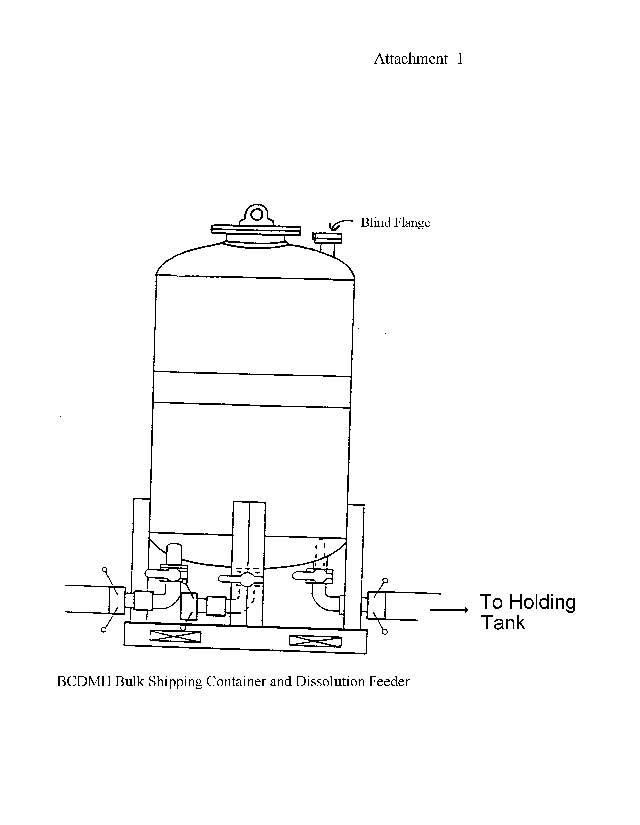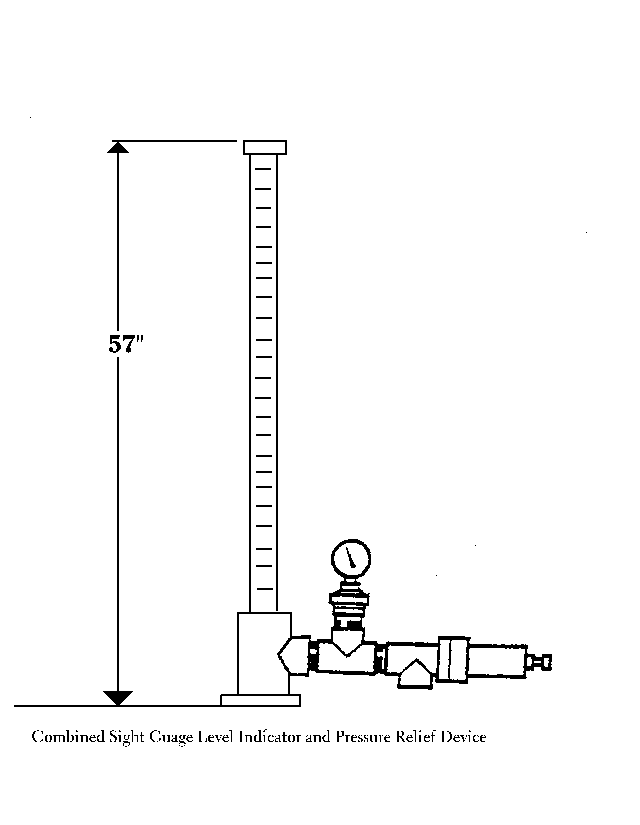OSHA Hazard Information Bulletins1
Potential Over Pressurization of Bromochlorodimethylhydantoin (BCDMH) Treatment Systems
August 30, 1994
REGIONAL ADMINISTRATORS
THROUGH:
- JIMMY ROBERTS
- Acting Director
- Office of Field Programs
FROM:
- CHARLES E. ADKINS, CIH
- Acting Director
- Directorate of Technical Support
SUBJECT:
- Hazard Information Bulletin1: Potential Over Pressurization of Bromochlorodimethylhydantoin (BCDMH) Treatment Systems
The Austin Area Office has brought to our attention potential health and safety hazards which may occur by utilizing a particular dispensing system to dose a dry chemical microbiocide, Bromochlorodimethylhydantoin (BCDMH) in commercial and industrial cooling water systems. In Region VI, an incident occurred in which newly installed BCDMH treatment systems experienced an unexpected and rapid evolution of gases causing the feed system to over-pressurize and rupture. The exact cause of the evolution of gases was not determined.
The dispensing system containing BCDMH is a transportable steel tank with a chemical resistant liner (see attachment #1). The steel tank serves as a combination of a bulk shipping container and a dissolution feeder. This type of dispensing system is equipped with connections which allow for the incorporation of a sight gauge level indicator to permit a visual inspection of the chemical bed height and a pressure relief device. These accessories are incorporated into a single unit (see attachment #2) and attached to the vessel on the small blind flange on the outer part of the top dome. Although pressure may be developed within these units, there is no specific OSHA or consensus standard that would require a pressure relief device to be installed on these tanks.
According to the Nalco Chemical Company, the distributor of this type of BCDMH dispensing device, the BCDMH chemical contains approximately 57 percent available halogen. The available halogen consists of bromine and chlorine and may evolve heat and hazardous gases under certain conditions. This chemical should never be mixed with organic chemicals, oxidizable chemicals or strong reducing agents. Data generated from the Hartman Dust Explosion Hazard Test indicate that the dry BCDMH product, by itself, is not ignitable. Data also indicate that BCDMH dust-air mixtures may ignite or explode. The distributor recommends that this chemical dispensing system be stored under cool and dry conditions, and that only make-up cooled water be used through it.
It is strongly recommended that regardless of the type of the dispensing device utilizing, BCDMH must be completely flooded with water at all times. Although not required by the pressure vessel standard, the distributor recommends the use of venting to ensure complete flooding of the chemical bed with water and a pressure relief device for unexpected increases in pressure.
The Material Safety Data Sheet (MSDS) on BCDMH indicates water as the appropriate extinguishing medium in case of fire. An ammonium phosphate extinguisher should not be used due to the potential volatile reaction it may have with bromine. OSHA requires that a copy of the MSDS be maintained at the site of use.
BCDMH can cause an acute inhalation hazard due to irritation of the nose and throat. OSHA requires the use of personal protective equipment when working with chemicals such as BCDMH. Appropriate personal protective equipment such as NIOSH approved respirators, impermeable gloves, boots, aprons, face shield and goggles may be required.
Please distribute this bulletin to a Area Offices, State Plan States Consultation Projects and appropriate and trade associations.
Attachments

Attachment 1. BCDMH Bulk Shipping Container and Dissolution Feeder

Attachment 2. Combined Sight Gauge Level Indicator and Pressure Relife Device
1 The Directorate of Technical Support issues Hazardous Information Bulletins (HIB) in accordance with OSHA Instruction CPL 2.65 to provide relevant information regarding unrecognized or misunderstood health hazards, inadequacies of materials, devices, techniques, and safety engineering controls. HIBs are initiated based on information provided by the field staff, studies, and concerns expressed on information provided by the field employers, and the public. Information is compiled based on a thorough evaluation of available facts, in coordination with the appropriate parties.
*Accessibility Assistance: Contact OSHA's Directorate of Technical Support and Emergency Management at (202) 693-2300 for assistance accessing PDF materials.
All other documents, that are not PDF materials or formatted for the web, are available as Microsoft Office® formats and videos and are noted accordingly. If additional assistance is needed with reading, reviewing or accessing these documents or any figures and illustrations, please also contact OSHA's Directorate of Technical Support and Emergency Management at (202) 693-2300.
**eBooks - EPUB is the most common format for e-Books. If you use a Sony Reader, a Nook, or an iPad you can download the EPUB file format. If you use a Kindle, you can download the MOBI file format.
Back to Top Translate
Translate